Community Partners
The Volusia Sandhill Ecosystem, A Teaching Landscape, is a long-term restoration project. We gratefully acknowledge grant funding from community, county and state partners.
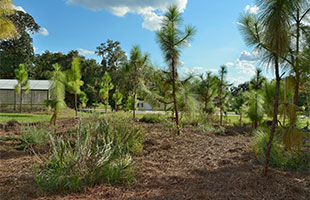
A restoration in progress.
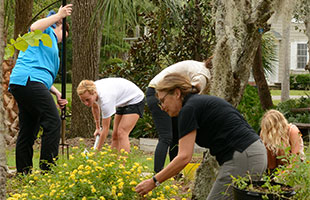
Flora of Florida students created a pollinator garden with native plants that provide both nectar and larval food sources for pollinators.
Volusia Sandhill Ecosystem: Initial Plantings
Volusia County
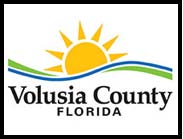
Our county colleagues have supported the project from the beginning — from canopy to understory.
A 2011 Tree Replacement Grant provided $10,000 for the first phase of the restoration, helping to establish a temporary irrigation system and to purchase the 80 trees (longleaf pines, turkey oaks, persimmons and black cherries) that provide the overstory and define the Teaching Landscape.
In spring 2014, we started a planting of more than 500 wiregrass plugs through a second grant — this one initiated by a plant ecology student. This grant also provided startup funding for a new kiosk to be installed between the Gillespie Museum and the Rinker Environmental Learning Center in fall 2014.
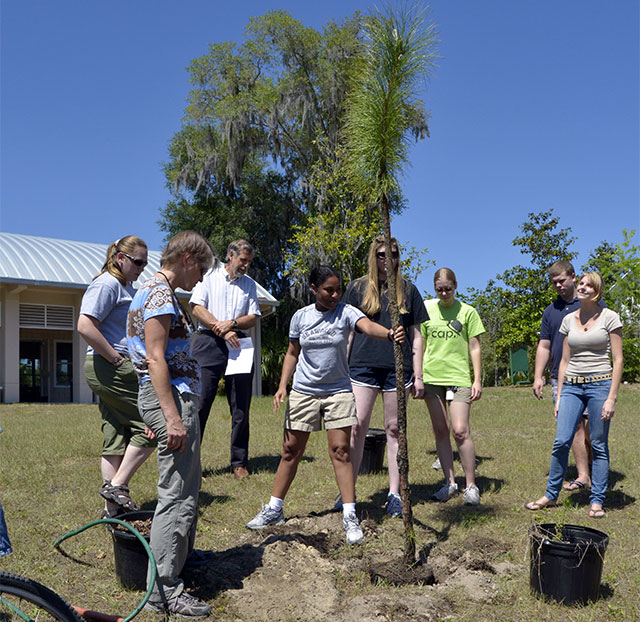
The first longleaf pine, planted by undergraduate volunteers in spring 2011.
Why Plant Native? Protecting Native Landscapes from Exotic Invasives
Florida Exotic Pest Plant Council
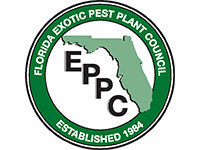
In fall 2014, through a Kathy Craddock Burke Education Grant from the Florida Exotic Pest Plant Council, Stetson University undergraduates researched and designed educational materials focused on the benefits of native plants and the inherent dangers of invasive exotics. In addition to listing Category I plant pests common in Volusia County, the brochure, sign and web page (under the rubric "Why Plant Native?") describe benefits of native species for water conservation and wildlife habitat, and list native alternatives to exotic landscape plants. The full-color pedestal sign (36" x 48"), which includes text and photos, was installed in the landscape during a February Science Saturday at the Gillespie, in conjunction with National Invasive Species Awareness Week. The brochure is available through the Rinker Environmental Learning Center kiosk, and the research supported by this grant has become an important component in educational outreach for K-12 students.
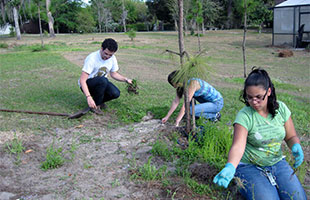
Biology students remove exotic turf grasses from the sandhill restoration area.
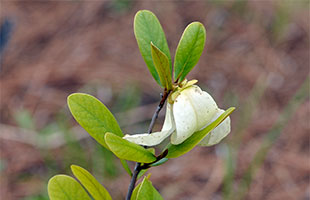
A native pawpaw (Asimina triloba) is an alternative to exotic flowering shrubs in the landscape.
Viva Florida Demonstration Garden at the Gillespie Museum
Florida Wildflower Foundation
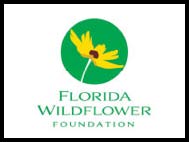
With funding from a grant from the Florida Wildflower Foundation, the southern entrance to the Teaching Landscape will become one of a number of Viva Florida Demonstration Gardens throughout the state. The site, roughly a 500 square meter area bordering the DeLand Greenway Trail along Ohio Avenue, will feature native Florida wildflowers associated with the longleaf sandhill ecosystem and will welcome visitors to the environmental projects on the grounds of the museum.
The Wildflower Demonstration Garden, along with interpretive signs, will encourage visitors to recognize and protect Florida's wildflower populations, particularly the historic longleaf sandhill ecosystem of the DeLand Ridge. Not only will it promote an understanding of the link between native ecosystems and the history and culture of "La Florida," the Demonstration Garden will also help to explain the role of wildflowers in supporting pollination, decreasing air and water pollution, conserving water, providing wildlife habitat, and enriching the environment for all Floridians.
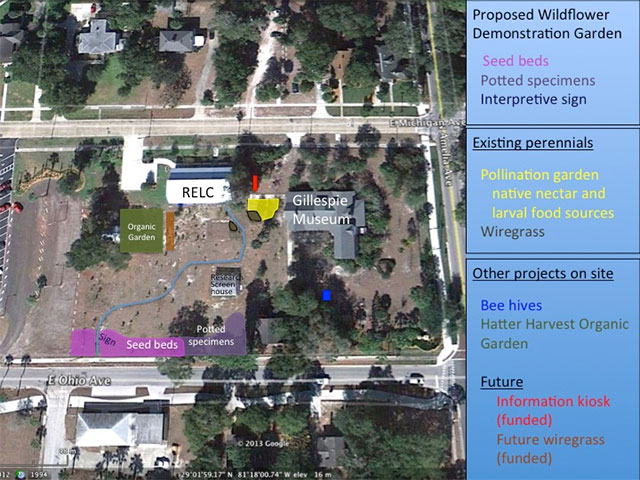
Site plan for the proposed demonstration garden.
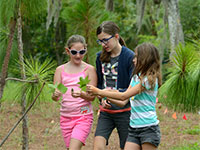
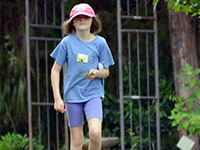
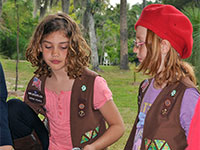
When the outdoors become a classroom, young scientists learn of the environmental significance of native wildflowers and of the longleaf pine ecosystem.